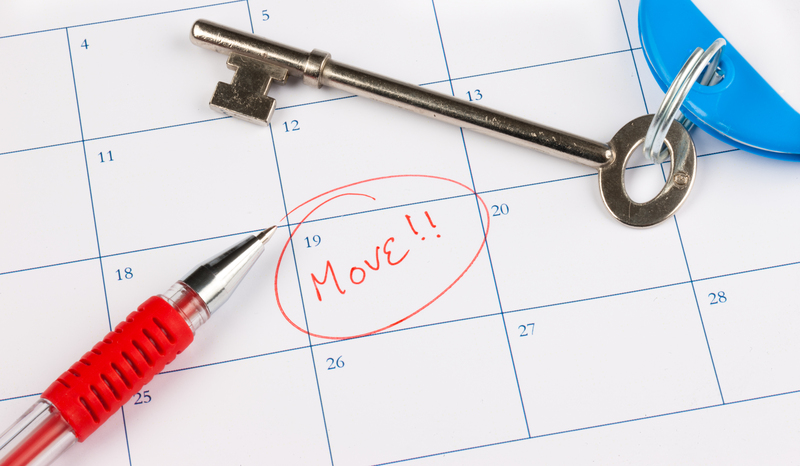Exploring the Dangers of Moving a Piano Alone
Posted on 22/06/2025

Exploring the Dangers of Moving a Piano Alone
Moving a piano is no small feat. These beautiful yet complex musical instruments are renowned not only for their exquisite sound but also for their significant size, weight, and fragility. With costs and accessibility in mind, many people consider handling the move themselves. But moving a piano alone brings a host of potential hazards that aren't always obvious until it's too late. In this comprehensive guide, we'll delve into the serious dangers of moving a piano without professional help and why it's often best left to the pros.
Why Moving a Piano is Uniquely Challenging
Before exploring the risks, it's essential to understand why pianos present such a daunting moving challenge:
- Heavy and Bulky: Upright pianos can weigh from 300 to 1,000 pounds, while grand pianos often exceed 1,200 pounds.
- Awkward Shape: With unequal weight distribution and protruding parts, pianos are not easy to grip or balance.
- Delicate Mechanisms: Over 10,000 moving parts--many of them fragile--can be damaged by any sudden movement or impact.
- Valuable Investment: Pianos often carry significant monetary and sentimental value. Any damage can be costly and irreparable.
The Physical Risks of Moving a Piano Alone
Attempting to move a piano without adequate assistance or equipment is perilous. Here are some of the most common physical dangers:
-
Back Injuries:
- Piano moving places immense strain on your lower back. One wrong lift can cause herniated discs, muscle strains, or even permanent spine injuries.
-
Crushed Fingers and Toes:
- Your hands and feet are at constant risk of getting pinched, crushed, or broken while adjusting a heavy, shifting piano.
-
Trips, Slips, and Falls:
- Pianos block your view and are difficult to maneuver, increasing the chance of accidents--especially on stairs, door frames, or uneven ground.
-
Hernias and Muscle Tears:
- Lifting or pushing a piano can cause hernias, muscle tears, or other severe bodily harm. These issues may take months to heal.
-
Fatigue-Related Injuries:
- The immense effort required can cause exhaustion, making mistakes more likely and heightening risk of injury.
Property Damage Risks When Moving a Piano Alone
Beyond self-injury, the risks of moving a piano without help also extend to your property:
- Scratched Floors and Walls: A piano's sharp corners and immense weight can easily gouge hardwood, rip up carpets, or leave scratches on walls.
- Broken Door Frames and Banisters: Squeezing a piano through tight spaces often results in damage to trim, railings, or doorways.
- Damaged Stairs: The force and pressure of a piano's mass can crack stair treads or cause their coverings to rip.
- Structural Harm: Dropping or dragging a piano can lead to more severe structural damage to your home or apartment.
- Crushed Furniture: Any accidental movement can send the piano into collision with other furniture or valuable items.
How Moving a Piano Alone Can Damage the Instrument
Pianos are complex creations, designed for delicate acoustics and intricate mechanisms. Poor handling or lack of experience can result in:
- Soundboard Cracks: The slightest misalignment or impact can crack the soundboard, destroying a piano's tonal quality.
- Broken Legs or Casters: Improper lifting can snap the legs or bend the wheels, making the piano unusable or unstable.
- String or Key Damage: Sudden jerks may break internal strings or misalign the delicate key mechanisms, requiring expensive repairs.
- Finish Scratches and Dents: Mishandling leads to major cosmetic damage that can ruin the value and appearance of your piano.
- Misalignment: An incorrectly reassembled piano may need tuning or even professional servicing before it is playable again.
Common Mistakes DIY Piano Movers Make
Untrained individuals often repeat similar mistakes when attempting to move a piano solo. Here's what frequently goes wrong:
- Underestimating the Weight: Many DIY movers don't realize just how heavy their instrument is until it's too late.
- Lack of Proper Equipment: Pianos require specific tools like heavy-duty dollies, straps, and moving blankets. Lacking these increases the likelihood of accidents.
- Skipping Necessary Disassembly: Attempting to move a grand piano without removing its legs and pedals is a recipe for disaster.
- Poor Planning: Not measuring doorways, hallways, or the route beforehand can trap the piano or damage your home.
- Inadequate Manpower: Attempting to move such a large instrument without additional help is both dangerous and unrealistic.
- No Insurance: Without professional movers, any damage to the piano or property isn't covered by insurance.
True Stories of Piano Moving Gone Wrong
The internet abounds with stories highlighting the perils of moving a piano without professional help. Here are just a couple to illustrate the real risks:
- The Staircase Catastrophe: In one infamous scenario, a homeowner attempted to move an upright piano down a flight of stairs solo. The instrument quickly became off-balance, tipping forward. Both the piano and mover tumbled down the stairs, resulting in a destroyed banister, a broken instrument, and multiple injuries including a fractured arm.
- The Doorway Disaster: Another DIY mover neglected to measure the width of their new doorway. The piano became wedged, causing irreversible damage to the piano cabinet and door frame when they tried to force it through.
- Flooring Frenzy: In an effort to slide a piano across hardwood, a mover left deep gouges that cost thousands to refinish. In the end, the cost of repair far exceeded what professional movers would have charged.
Piano Types and Their Unique Moving Hazards
Not all pianos are created equal--each type carries distinct difficulties, particularly when moving pianos without professional movers:
- Upright Pianos: These are tall, heavy, and tend to tip easily due to their top-heavy design. Awkward to grip and difficult to get through doorways.
- Baby Grand and Grand Pianos: Their size, curved sides, and three-legged base make them difficult to maneuver. Moving a grand almost always requires partial or full disassembly.
- Console and Spinet Pianos: While lighter, they are still unwieldy and susceptible to internal damage if not properly protected and supported during the move.
What Professional Piano Movers Do Differently
Engaging professional piano movers isn't just about convenience--it's about expertise and the right equipment. Here's how the experts minimize risk:
-
Specialized Tools:
- They use heavy-duty piano dollies, lifting straps, and skid boards designed specifically for the instrument's shape and weight.
-
Protective Padding:
- Blankets, corner protectors, and shrink-wrap prevent scratches and dents to both the piano and property.
-
Experienced Handling:
- Teams are trained in balancing and lifting techniques to prevent tipping and muscle strain.
-
Insurance Coverage:
- Any accidental damage is typically covered by professional insurance, offering peace of mind.
-
Pre-Move Planning:
- Careful assessment of resources, obstacles, and piano-specific needs makes the process as smooth as possible.
Safety Tips if You Must Move a Piano Yourself
Despite the many dangers, if you decide to proceed, follow these basic guidelines to reduce risk:
- Never attempt to move a piano alone. Always have at least 4 strong adults present.
- Invest in proper equipment. Secure a piano dolly, moving straps, gloves, and plenty of padding.
- Plan your route meticulously. Measure all passageways, clear obstacles, and prepare ramps where necessary.
- Disassemble when possible. Remove legs, pedals, and music stands to make the instrument less unwieldy.
- Lift with your legs, not your back. Use proven lifting techniques to reduce muscle strain and prevent injury.
- Protect floors and walls. Lay down padding and cover sharp corners to avoid property damage.
- Secure insurance coverage. Make sure your renter's or homeowner's policy covers damages from moving mishaps.
- Know when to call for help. If anything feels unsafe or unmanageable, it's time to bring in professional movers.
The True Cost of Moving a Piano Alone
Initially, it may seem that moving a piano yourself saves money. But when you factor in personal risk, the cost of damage to the instrument or home, and potential medical bills, the savings quickly disappear.
- Piano Repair: Minor to major repairs can cost anywhere from $200 to $5,000, depending on the extent of the damage.
- Home Repair: Fixing walls, floors, or stairs can surpass $1,000 for even simple patches or refinishing.
- Medical Bills: Injuries like back strains or broken bones can result in thousands in out-of-pocket expenses.
- Loss of Value: Serious damage can render your piano unsellable or unplayable, representing a significant financial and emotional loss.
Frequently Asked Questions About Moving a Piano Alone
-
Is it ever safe to move a piano by myself?
No. The dangers of moving a piano by yourself outweigh any potential cost savings. Always ask for help or hire professionals. -
What equipment is required to move a piano safely?
Heavy-duty piano dolly, moving straps, protective blankets, gloves, and often piano-specific tools for disassembly. -
What should I do if my piano is extremely heavy or located upstairs?
Never attempt to move it alone. For stairs or particularly large instruments, always engage experienced piano movers for your safety and the instrument's protection. -
Will my homeowner's insurance cover damage from a DIY move?
Not always. Many policies exclude damage during moving or impose high deductibles.

Conclusion: Leave Piano Moving to the Professionals
Moving a piano alone is not only extremely risky--it can also be far more expensive in the long run than hiring professionals. From physical injuries to severe property or instrument damage, the hazards are simply not worth the gamble. When it comes to relocating your piano safely, professionals are your best bet. Investing in expert piano movers protects both you and your beloved instrument, ensuring every note remains perfectly in tune and your home unscathed.
Ready to move your piano? Save yourself the stress, cost, and risk--contact a professional piano moving service and let the experts hit all the right notes!
```


 Guide price for the hire of a Transit Van /up to 300 cu ft/.
Guide price for the hire of a Transit Van /up to 300 cu ft/.